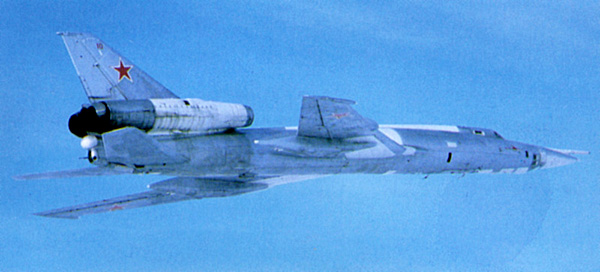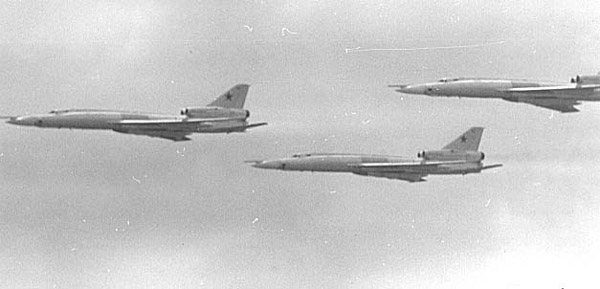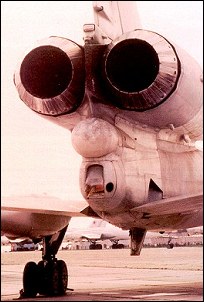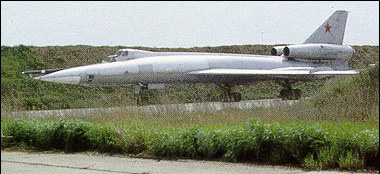 |
At the end of the fifties the Soviet Union Air Force decided to replace the old TU-16 Badger with a new supersonic high-speed bomber. Famous as the aircraft with practically no straight lines, the Tu-22 is an almost totally rounded design. Often derided as a failure by the West, the Tu-22 was developed as a response to the increasing effectiveness of NATO air defences against slow moving turboprop powered Soviet bombers. Thus the Tu-22 was designed for a short supersonic dash at very high altitude to penetrate hostile airspace. The Tu-22 (project name Tu-105) was first flown in 1957. The aircraft went in production in 1958 but made its first public appearance at Aviation Day 1961, in Moscow. Having an efficient wing closely related to that of the TU-28P, this supersonic bomber is a large aircraft with a bigger body and higher gross weight than the B-58 Hustler. Typical crew appears to be a pilot, upward-ejecting, and two more member in tandem at a lower level who eject downwards. The aircraft emerged with its two engines mounted either side of the vertical tail to reduce the drag of long air inlets. But even by the time the aircraft was in service it had already been practically made obsolete by new air defences and so in Soviet service was switched to the maritime strike role where is still serves in the CIS along with an ECM version. |

|
 |

|

|